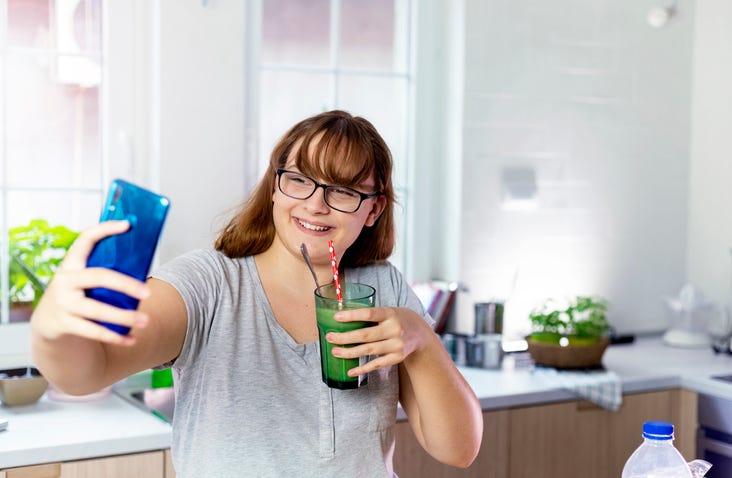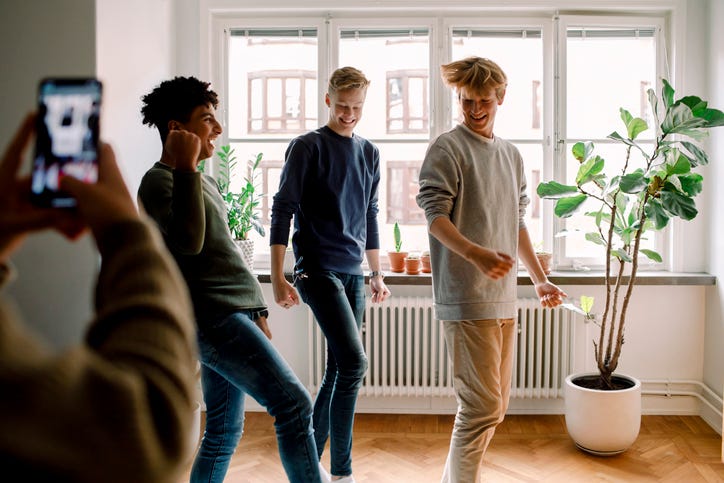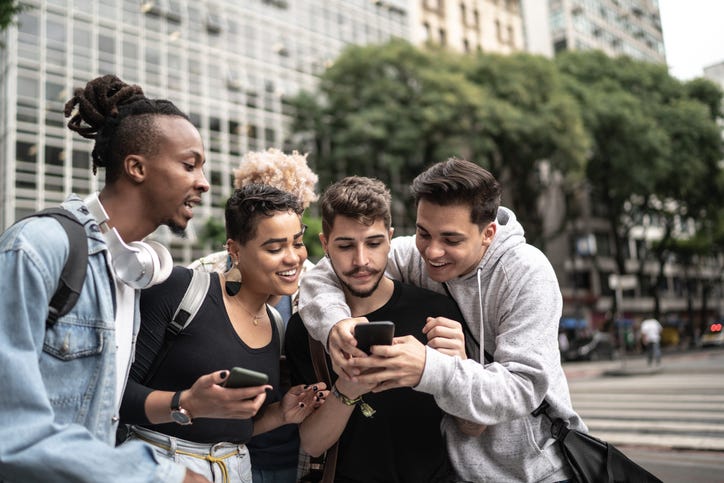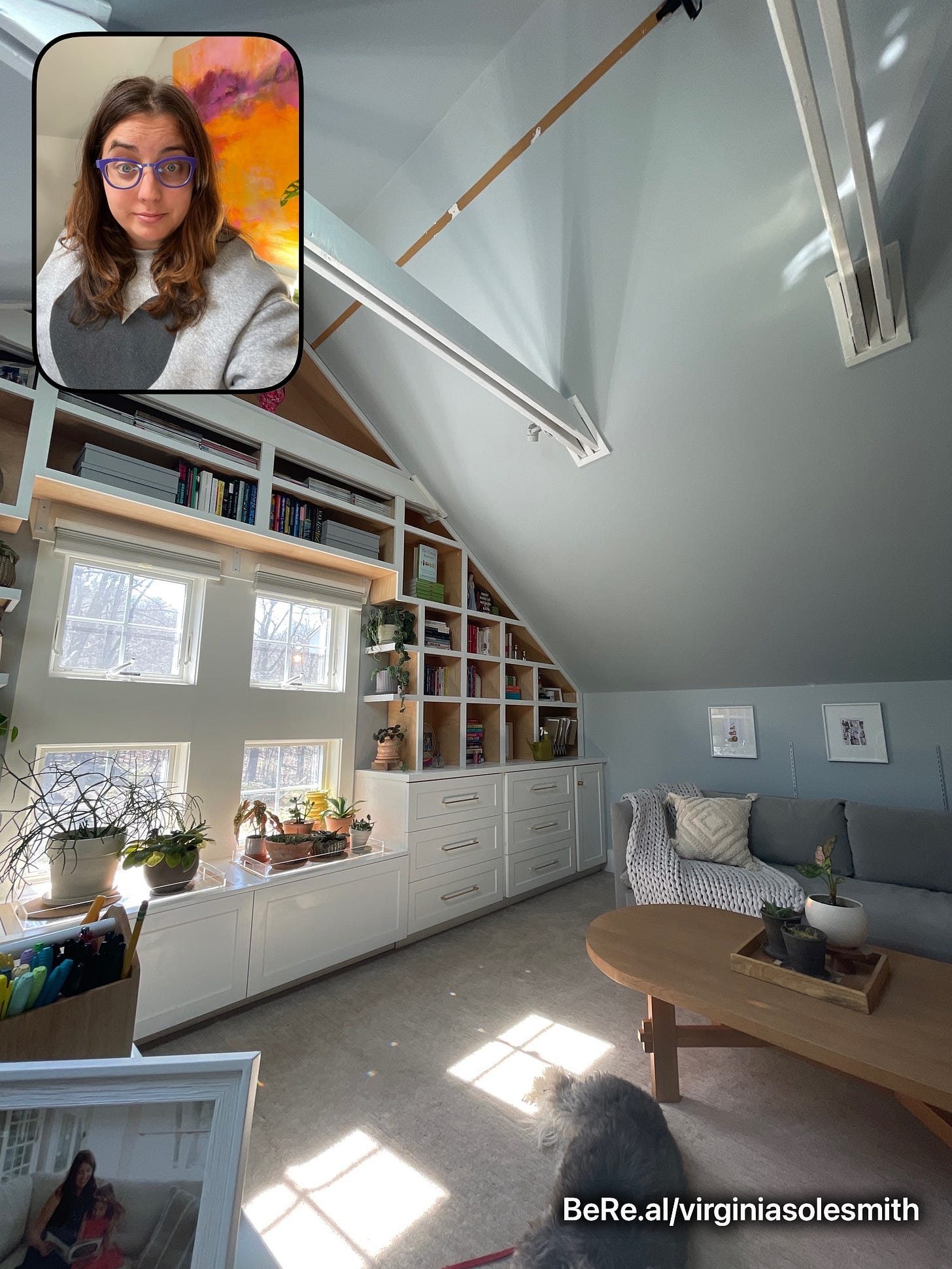Book Research Roundup: Are Screens The New Sugar?
Navigating Anti-Fatness, Social Media, and Kids.
It’s time for your monthly book research roundup! This month I’ve been working on the last reported chapter of my book. It’s not done-done. I still have to write the introduction and conclusion and then there will be five million other things to do before it’s a book in your hands a year-ish from now. But it’s close(r)! And I’m excited/ready to be done writing it! That said, we’ll keep these research roundup posts going for awhile because I didn’t start doing them until I was halfway through the book and I have a bunch of great chapter research files still to share (as I annotate chapter drafts for fact-checking).
Anyway! This chapter explores how social media exposes kids to diet culture and anti-fat bias, and what parents can do about it. On the one hand: It feels so obvious to name social media as a source of toxic body messaging that I wasn’t sure what else there would be to say in this chapter besides MY EYES, MY EYES. (Which is exactly what I said after spending a few hours watching fitness and beauty influencers on TikTok last week.)
On the other hand, I think we do an awful lot of fear-mongering around kids and screens in general, and it absolutely does start to feel a lot like the fear-mongering we do around kids and sugar. And both screens and sugar are facts of this world, so figuring out how to empower kids to enjoy what’s good and navigate what’s not seems like a better way through, for most of us. This was a point that many of you made when we discussed this chapter in a recent Friday Thread, and is certainly something I’m pondering as I research and think about this chapter.
And here’s what I’ve been reading.
CW: Some of the articles I link to use weight-stigmatizing language because science is full of anti-fat bias and most of the articles discussing how social media spreads eating disorders talk about ED behaviors in a fair amount of detail.

The bad news:
Facebook’s internal researchers have known for quite a while that the way kids use Instagram can increase their risk for body image struggles and eating disorders, according to a Wall Street Journal investigation published last fall. “We make body image issues worse for one in three teen girls,” said one slide by Facebook researchers from 2019. (Here are all the company documents that the WSJ obtained.)
These internal documents were followed by executive testimonies in Senate subcommittee hearings, which further underscored that social media companies know what they’re doing here. (Of course Facebook later disputed all of this.)
Not surprisingly, we also have academic research that supports the company’s findings. (Here’s another.)
And it’s not just Facebook, which is relevant because kids aren’t even on Facebook anymore (and seem to only use Instagram for DMs?). TikTok claims to have censored pro-ana content, but its high volume of anti-pro-ana content is probably just as dangerous, because these videos still talk explicitly about disordered eating behaviors.
Disordered eating behaviors trend perpetually on a social media platform under the guise of nutrition and fitness advice. Some recent hits: Dry scooping protein powder, What I Eat In A Day videos, the Corpse Diet.
Diet, fitness and beauty influencers are also increasingly savvy in their use of body positive rhetoric to justify their decisions to lose weight or get plastic surgery, as I wrote for Medium in 2019.
Related: This Insider.com reporter created a TikTok account for a fake 14-year-old. It took 8 minutes for a plastic surgeon’s promotion video to appear.
Plastic surgeons aren’t being stealthy about this either; it’s part of their business model. Here’s a paper from the Journal of the American Society of Plastic Surgeons analyzing how plastic surgery influencers on TikTok get the best user engagement.
The discourse around Facebook’s internal research has focused on teenage girls, but kids of all genders are impacted. This paper analyzes social media messages about male bodies and their potential for harm.
We’re hearing it straight from kids too: Love Leena Feeley’s piece for Your Teen (you can also hear from her in this Dove/Romper collab).
And just in general: Screen use is up 17 percent for tweens and teens since the start of the pandemic.
Teenagers spend around 90 minutes of their daily screen time on social media. (A lot more time is spent watching videos so YouTube isn’t going out of business anytime soon).
Social media use is starting younger, with 38 percent of tweens saying they’ve used it “ever” and 18 percent saying they use it daily. (Both up around five percent from 2019, but I’ll note they still only average 18 minutes per day on social.)
The good news:
Despite all of the above: A growing pile of evidence suggests that social media is not this generation’s cigarettes. This analysis of data from 120,000 English teenagers concluded that “moderate use of digital technology is not intrinsically harmful and may be advantageous in a connected world.” The researchers found similar results in this more recent study of almost 350,000 kids.
Even the research documenting harm can only show correlations between say, screen use and depression, rather than causal relationships. (Hmm, just like weight and health research!) I appreciate how Melinda Wenner Moyer breaks down the evidence in her newsletter on kids and screens:
[These studies] don’t tell us how screens affect kids over time, nor can they determine whether screens are actually the cause of the outcome they’re investigating. For instance, kids who spend a lot of time on screens can differ in many ways from kids who spend little time on screens. They may have different family backgrounds, go to different kinds of schools, and have different levels of privilege, just to name a few possibilities. Researchers try to statistically “control” for these other factors, but the controls don’t always work well.
Social media also offers opportunities for kids to be exposed to broader definitions of beauty than they see in traditional media. You can’t re-cast your favorite Netflix show with fat actors, but you can curate your Instagram feed. When researchers randomly assigned 195 women aged 18 to 30 to view Instagram content that was either body positive, body neutral, or promoting the thin ideal, they found that participants who got the #bopo posts scored more highly on body satisfaction and body appreciation. But: Seeing those posts was associated with the same level of self-objectification as seeing thin ideal posts.
The same researchers also found some benefit in #nomakeupselfies.
Where do we go from here?
Several researchers I interviewed said that parents focus too much on how much time kids spend online and we should pay much closer attention to what they’re doing there—because it can be either great or terrible.
That said, there’s still an argument for paying some attention to how much time your kids spend on social media, especially when they’re younger. (It’s also worth noting that kids aren’t supposed to be on these apps until age 13 and there are plenty of good reasons to stick to that as your starting point, or even to delay a bit longer.)
Once your kids do get online, make sure they know that quitting or taking breaks (even for a weekend!) is always an option.
Research is still sorting out a clear hierarchy of which kinds of social media engagement are the most harmful (and I suspect a lot of it depends on your kid). But some studies suggest that following influencers is worse for kids, perhaps because they drive what researchers call perceived attainability and upward comparisons.
Fitspiration, disclaimer labels, and the practice of taking and editing lots of selfies (but not necessarily posting them) are also associated with negative effects on body image.
I love and co-sign all the suggestions in Jessica Grose’s smart take on the Facebook research reveal.
The teenagers I’ve been interviewing for this chapter have been pointing me to a few influencers they find helpful, not harmful, and Spencer Barbosa comes up a lot. (Not an endorsement, just reporting!)
I also love all of your suggestions for good follows that came up in our Friday Threads on redefining beauty and folks we love in fat justice work.
Oh! And while I remain a TikTok holdout (hopefully forever but we’ll see what my publisher says when I’ve got a book to launch?) I did get on BeReal in the name of book research, after three sources in a row told me I should. The premise is an unfiltered, unedited, more authentic social media: You post one pic a day, at the same time as all your friends, so there’s no point in even looking at it till the app reminds you that it’s posting time. In theory this sounds great. But I am a little stressed out by how the app takes a selfie and a forward-facing pic at the same time. And how long till FaceTune and ring lights arrive? (If you’re using it, I’m @virginiasolesmith.)






